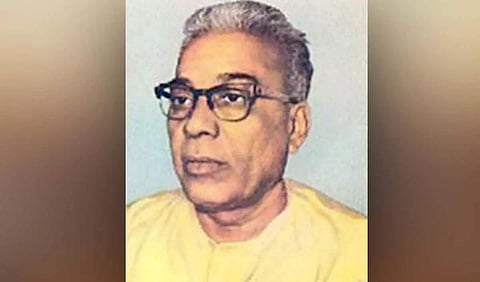
- Home
- Live Blog
- Breaking News
- Top Headlines
- Cities
- NE News
- Sentinel Media
- Sports
- Education
- Jobs

NAGPUR: Madhukar Dattatraya Deoras was born on December 11 of 1915, in Nagpur. He played a major role in the creation and development of the methodology of the Rashtriya Swayamsevak Sangh and went on to become its 3rd Sangh Chalak. He is more familiar with the name Balasaheb or Babasaheb Deoras.
Balasaheb joined his Shakha in 1927, at the young age of 12 years. Gradually his contact with Keshav Baliram Hedgewar increased leading to his inclusion in the 'Kushpathak' of the evening branch in Mohite's enclosure which was reserved for especially talented students. He was an expert in sports and enjoyed playing Kabaddi, but never at the expanse of his studies.
Balasaheb Deoras maintained an open-minded attitude since childhood. He strongly opposed all evil practices and outmoded traditions. Friends from all castes used to visit his house and everyone used to eat and drink together. His mother's initial objection regarding the matter gradually gave way after his insistence regarding the matter.
After completing his law studies, Babasaheb Deoras worked as a teacher for two years in Nagpur's Anathvidyarthi Vasatigriha. He was the Nagar Karyavah of Nagpur at that time and became a preacher in 1939 which took him to Kolkata. With the death of Doctorji in 1940, he was recalled to Nagpur. In 1948, when the Sangh was banned using false allegations of Gandhi's assassination, Balasaheb played a major role in conducting Satyagraha against it and was able to cancel the ban after contacting many eminent people in the society.
Nagpur remained his Karam-bhumi or place of work for about 30-32 years from 1940. Teachers from Nagpur used to visit Sangh Shiksha Vargas located across the country. The campaigners from Nagpur went to every province of the country and set up the working of the union.
In 1965 he became Sarkaryavah. He started the gan-geet, question and answer etc. organised at the branch. Pictures of Doctorji and Guruji were displayed in the programs of the Sangh. After Balasaheb became Sarsangh Chalak, some people also started putting his picture alongside the previous heads. But he gave a brilliant example of his tendency to shy away from fame by telling people to remove his photo.
After the death of Guruji in 1973, he became the Sarsangh Chalak. He faced the ban on the Sangh in 1975 with great patience. He also remained in Pune jail for the entire duration of the Emergency. But the Sangh succeeded in this challenge of freeing the country from the dictatorship of Indira Gandhi through Satyagraha and the following elections. In spite of his medical condition, he performed this responsibility brilliantly till 1994.
During his duration, Balasaheb Deoras added many new dimensions to the union's work. The most important of these is the work towards service in poor settlements. This prevented the process of conversion from reaching these communities. Many organizations were established at the provincial level by volunteers. After the Meenakshipuram incident, the grand form of Hindu power manifested during the Ekatmata Yatra and during the following Shri Ram Mandir movement, the work and influence of all these organizations played a significant role.
When he was no longer fit to travel, he handed over this responsibility to Rajendra Singh Romar, popularly called Rajju Bhaiya after consulting the key workers of the organisation. He breathed his last on June 17, 1996. And as per his wishes, he was cremated at the cremation ground of ordinary citizens in Nagpur instead of Reshimbagh.
Also Watch: